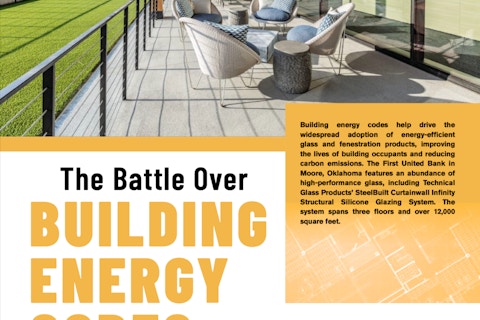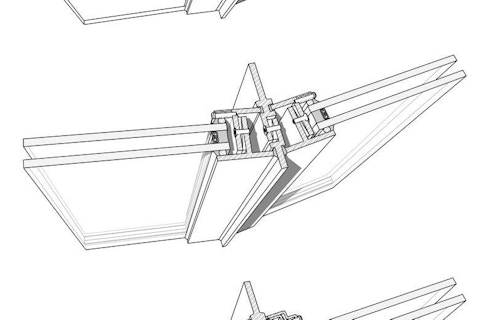Introduction to APT
Introduction
The Association for Preservation International (APT), founded in 1969, is the world’s largest professional organization dedicated to the theory and practice of the conservation, preservation, and renewal of the existing built environment. Since as early as 1987, APT has steadily, through writings and conference presentations, been raising the issue of how the design and heritage conservation communities can work together in the broadest sense to address the diverse and often challenging legacy of the heritage of twentieth century modernism. In 2006 the APT Board chartered a new committee—the Technical Committee on Modern Heritage (TC-MH)—to champion issues dealing not only with the important iconic and monumental legacy of the Modern Movement, but also to develop strategies for sustaining and enhancing (where appropriate) the Ordinary Everyday Modernism (OEM) that, especially since 1945, has become a dominant component of today’s built environment.
The TC-MH from the beginning has sought to forge relationships based on dialogue and collaborative activity with organizations such as the Getty Conservation Institute and Docomomo that are also advancing the cause of conserving modernism. At the Los Angeles APT annual conference in 2009, the TC-MH convened a full conference track and panel discussion on “Modern Heritage: Progress, Priorities and Prognosis.” This is turn prompted a special double issue of the APT Bulletin in 2011 devoted to this topic—this was the fourth issue of the Bulletin that focused on Modern heritage issues.
In the ensuing years the TC-MH has developed four full-day symposia/workshops, most of which were accomplished in tandem with the Technical Committee on Sustainable preservation (TC-SP), and published two additional special issues of the APT Bulletin. Among these programs we particularly note our inaugural collaboration with the Facade Tectonics Institute (FTI) via Mic Patterson’s participation in the 2015 Kansas City “Renewing Modernism” symposium, and his more recent participation in our Seattle Symposium on “Aging Composite Materials and Assemblies – Sustainable Repair and Re-investment.” Our commitment to further engage with FTI begins with our response to Mic’s gracious invitation to guest edit this edition of Skins. The following are some basic remarks about dealing with historic curtain walls, the start of a framework for what we hope will become a broader, more in-depth exploration of one of the great design and conservation building challenges of our era.
Provocation
One of the most ubiquitous and consequential innovations in design and construction technology in the post-World War II era was the development of curtain wall construction. Though employing a wide range of materials, the predominant systems were metal and glass assemblies attached to concrete or steel structural frames. The integrity of these systems depended to a large degree on an array of synthetic seals, gaskets, and fasteners to hold the assemblies together and ensure sound attachment to the structure. Over time, most of these components reach the end of their service lives and must be renewed or in most cases replaced. Today, the challenge to the designers, conservators, and building owners charged with undertaking these renewal campaigns is to answer the call to do so with minimal environmental impact. Some of these challenges include:
- In situations where retention of the original curtain wall/glazing is a priority for both heritage and environmental reasons, overcoming the inability to replace seals, gaskets, etc., on otherwise serviceable enclosure systems without discarding the glass or glazing components as well.
The inability to repair a standard IGU once the perimeter seal fails leads to the otherwise unnecessary replacement of the glass itself.
This is particularly an issue with repair of failed seals on unitized curtain wall systems, where the glazing support system is also discarded.
- Upgrading to meet energy and seismic/wind lateral load codes while maintaining historic profiles and materials. This includes:
Reinforcement of structural supports and system-structure connections, both to support heavier glazing systems and to meet more stringent code requirements.
The demand for thermally improved or thermally broken glazing systems, and often the necessity to move from single to double or triple glazing, creates dimensional fit issues in many buildings—this is an issue with typical steel and early aluminum framing systems.
- Presence of hazardous materials and their abatement.
PCBs in perimeter sealants leach into surrounding fabric where glazing systems join concrete or masonry cladding or structure. The PCB containing materials must either be removed or encapsulated through coating.
Asbestos, which is a component of Transite cement board, was used extensively between the 1930s and early 1970s and is also present in many adhesives of this period.
These are some of the concerns being raised as more of the building stock from the 1950s–1980s (and beyond) comes up for renewal. In addition to addressing inherent issues of historic preservation, APT believes that finding innovative means to address what is part of a larger environmental issue on the wisdom of recycling existing buildings and is of concern to everyone in the design and construction industry. APT thus welcomes the outreach of the Facade Tectonics Institute to extend the dialogue started in 2015 at APT’s Renewing Modernism Conference that has continued with the presentation by APT committee members at Facade Tectonics conferences over the last several years. We look forward to continuing our collaboration and expanding this relationship into a rich and mutually enlightening partnership.

David Fixler, FAIA, FAPT LEED
Architect
David Fixler is an architect in practice since 1980. A graduate of Tufts and Columbia Universities, he is an expert in working with historic buildings and precincts of the 20th century modern movement, having guided the rehabilitation of numerous landmark facilities for government, cultural and higher education clients. A frequent writer on architecture and preservation, David has had his design and written work published in books and journals internationally. Currently a Lecturer at the Harvard Graduate School of Design, he has also lectured and taught at a variety of institutions and venues in 17 countries on 5 continents.
Mr. Fixler is a Fellow of the American Institute of Architects (AIA) and the Association for Preservation Technology International (APT), Design Peer Review Architect for the United States General Services Administration (GSA), co-founder and past president of Docomomo-US/New England, past United States representative on the Docomomo International Specialty Committee (ISC) for Registers, co-founder and former co-chair of the APTI Technical Committee on Modern Heritage, and former chair and current member of the Heritage Conservation Committee of the Society of Architectural Historians (SAH).
Looking for something specific?
Search our extensive library.
FTI’s SKINS email is the central source for the latest in building skin trends and research.
All emails include an unsubscribe link. You may opt out at any time. See our privacy policy.









